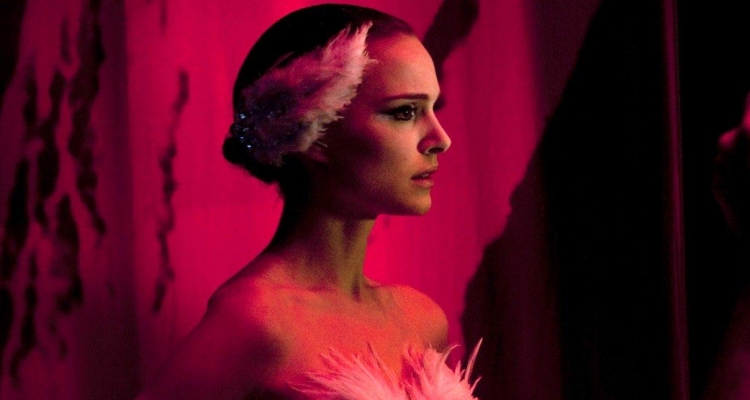There are few filmmakers whose work is as instantly recognizable as Darren Aronofsky‘s. His subject matter has differed wildly, from Kabbalistic mathematical conspiracies to drug addiction to high-class ballet to Biblical apocalypse in this weekend’s “Noah.” But his heart-on-its-sleeve, unsubtle (that’s not a knock, necessarily), highly cinematic, uniquely stylized films couldn’t possibly be mistaken for anyone else’s, even as their content proves ever-surprising.
But even aside from directorial technique, there’s a continuity in the filmmakers’ work: he’s a great director of actors. Despite the films being almost the definition of Oscar-unfriendly, he’s helped four performers earn Oscar nominations in the 15 years since he broke through, including a win for Natalie Portman. But even those who go unrecognized—from first-timers to Aronofsky favorites like Mark Margolis to major movie stars—turn in fantastic performances. With Russell Crowe getting some great notices for “Noah,” even as the early reviews are more divided (what’s new, for an Aronofsky film?), we decided to pick out 6 of our favorite performances from the director’s five films to date. Agree? Disagree? Say your piece in the comments section below.
 Ellen Burstyn as Sara Goldfarb in “Requiem For A Dream” (2000)
Ellen Burstyn as Sara Goldfarb in “Requiem For A Dream” (2000)
Aronofsky’s second film, his impossibly bleak, hyperactive adaptation of Hubert Selby Jr.‘s “Requiem For A Dream” is, like all of the director’s films, either the greatest thing you’ve ever seen, or an over-styled mess. Love it or loathe it, there’s one element of the film that’s basically inarguable, and that’s the performance turned in by veteran Ellen Burstyn. The actress, the star of “The Exorcist” and “Alice Doesn’t Live Here Anymore” (the latter of which won her an Oscar) had a quiet couple of decades, cropping up only every so often in lukewarm weepies like “How To Make An American Quilt” or “When A Man Loves A Woman,” so few were prepared for what she could do with Aronofsky. As Sara Goldfarb, the pill-popping, deeply lonely, TV-struck mother of heroin addict Harry (Jared Leto), the then 68-year-old actress wore two different fat suits (the largest adding as much as 40 pounds), before shedding 10 pounds for the final stages of filming as an emaciated Sara is institutionalized. But the transformation goes far beyond the physical. Though the character’s desire to fit into her old red dress is at the source of her downfall, there’s not a shred of vanity in Burstyn’s actual performance, as she throws herself wholeheartedly into Sara’s desperation, heartbreak, aspirations and fears. All four principal actors are remarkable in the film (who knew that Marlon Wayans was capable of something like this?), but it’s Burstyn raw, totally vulnerable, self-deluded turn that’s the source of the desperate, overwhelming sadness that makes the film such a (deliberately) tough watch, not least for anyone with an aged parent themselves—her mid-film monologue will undoubtedly leave you sobbing like Leto immediately afterwards. Burstyn received another Oscar nomination for the performance, the first for one of Aronofsky’s films, but it proved too tough a watch for the Academy, who went for Julia Roberts in “Erin Brockovich” instead.

Hugh Jackman as Tomas/Tommy/Tom Creo in “The Fountain” (2006)
Hugh Jackman has been a movie star for nearly a decade-and-a-half now, but he’s still best known either for his superhero ass-kicking, or charming Broadway-approved song-and-dance, with praise for his straight-up acting only arriving in the last few years, with an Oscar nod for “Les Misérables” and critical plaudits for last year’s “Prisoners.” All of which is a little unfair, because in 2006, the Australian star gave the two best of performances of his career, cannily using his innate charm against itself with an impressively unsympathetic turn in Christopher Nolan’s “The Prestige,” and taking a very different turn—or three—in the most divisive and derided film of Aronofsky’s career, “The Fountain.” Originally intended for Brad Pitt in the film’s bigger-budgeted earlier incarnation, the triptych of parts sees Jackman playing a 16th century conquistador on the hunt for the Tree Of Life, a present-day scientist hoping to cure his wife’s brain tumor, and a bald-headed astronaut in the far future escorting the Tree through the universe. This isn’t “Holy Motors” or “Dr. Strangelove”—the three roles aren’t wildly different, and Jackman isn’t doing anything to make them wildly different from each other. But that’s because the nature of the film is that they are all the same person, or elements of each other, and the actor does a good job at showing that throughline of shared DNA between the three Toms. But more than anything, it’s the rawness of the turn that makes this memorable. The film is the most transparent, unsubtle, personal and sincere film of the career of a director who’s never been far from those qualities, and Jackman was the perfect person to pin the film on, especially in his present-day incarnation. He’s a man who knows that the fight against death is already lost, but he’ll fight against it as long as he can stand, even at the expense of spending final moments with his wife (Rachel Weisz, also strong). It’s pig-headed, but eminently relatable, and Jackman’s raw and immensely moving in the way that he captures that kind of I-can’t-stop-or-I’ll-collapse approach to grief.

